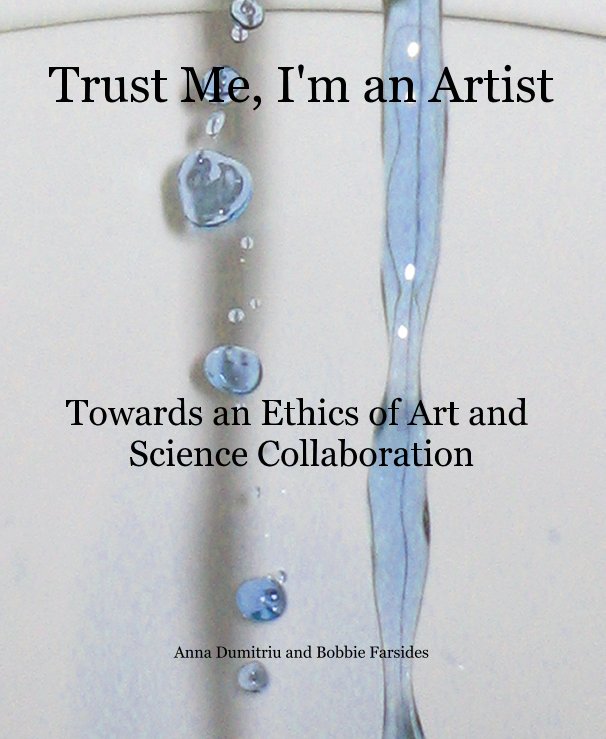The VOID
Barbican Gallery, LondonMax Planck Insitute, Berlin
International3, Manchester
Sherburne House, Dorset
2004-5


Lets Experiment with Ourselves
Self Experimentation - The VOID
An artist led research project funded by Wellcome Trust
The VOID - Performance (Artist + Visitors)
THE VOID at 'The Sensory Clinic' International3, Manchester - April 2005.
THE VOID at Barbican, London - 1st July 2005. 'Colour After Klein', Exhibition programme.
THE VOID in Berlin, with Max Planck Institute, May 6th 2006. An event performed after the Self-Rapport workshops, organised by Katrin Soldhju from the 'Experimentization of Life' Research Department.
THE VOID at Sherbourne House, Devon, May 19th 2006. 'Colour and Chemistry'.
The project was developed at National Institute for Medical Research, Mill Hill, London. It was conceived and developed with support from staff and curator Simon Gould.
Following several months research into self-experimentation, including discussions with senior researchers, the investigation confirmed that it is self-experimentation is still considered a non-method in clinical research, despite its use in Nobel award winning research. The final realisation of the project, was developed and proposed as a clinical trial. This was rejected and the performance work The VOID was developed as a result.
The complex moral and ethical discussions that lie at the heart of this work inspired artist Anna Dumitri to undertake a longer project that explored such dilemmas. The front cover of her book Trust Me, I’m an Artist. Published by Waag Society, 2014 features an image from this project. The book includes the chapter “Self-Experimentation & the Nervous Culture: Neal White’s Ethics Committee of 1’, by Nicola Triscott.
![]()
Self Experimentation - The VOID
An artist led research project funded by Wellcome Trust
The VOID - Performance (Artist + Visitors)
THE VOID at 'The Sensory Clinic' International3, Manchester - April 2005.
THE VOID at Barbican, London - 1st July 2005. 'Colour After Klein', Exhibition programme.
THE VOID in Berlin, with Max Planck Institute, May 6th 2006. An event performed after the Self-Rapport workshops, organised by Katrin Soldhju from the 'Experimentization of Life' Research Department.
THE VOID at Sherbourne House, Devon, May 19th 2006. 'Colour and Chemistry'.
The project was developed at National Institute for Medical Research, Mill Hill, London. It was conceived and developed with support from staff and curator Simon Gould.
Following several months research into self-experimentation, including discussions with senior researchers, the investigation confirmed that it is self-experimentation is still considered a non-method in clinical research, despite its use in Nobel award winning research. The final realisation of the project, was developed and proposed as a clinical trial. This was rejected and the performance work The VOID was developed as a result.
The complex moral and ethical discussions that lie at the heart of this work inspired artist Anna Dumitri to undertake a longer project that explored such dilemmas. The front cover of her book Trust Me, I’m an Artist. Published by Waag Society, 2014 features an image from this project. The book includes the chapter “Self-Experimentation & the Nervous Culture: Neal White’s Ethics Committee of 1’, by Nicola Triscott.

THE VOID
This inverse performance work was based on a little known story concerning Yves Klein exhibition 'Le Vide' at Iris Clert Gallery in Paris in 1958 (as first told by curator Cecilia Andersson). The story is less well known as the main work by Yves Klein, an empty room, and violent responce that ensued at the opening was so controversial that this particular aspect had been overlooked.
It transpires that during the opening event, visitors received a clear cocktail that eventually caused the urine of drinkers to turn intense blue, for a week. The research into this event led to a proposal for a cultural/clinical trial, to trace the impact on the visitors.
In this reworking of the event, THE VOID, over 100 people decided to recreate the experience personally through voluntary acts of self-experimentation.
During the performance the artist is enclosed in a hermetically sealed room at the centre of the space. Visitors were invited to receive a limited edition artwork - a pill inside a petri dish signed by the artist, but only after they signed a disclaimer, agreeing not to consume or eat the pill. For those who chose to self-experiment, a personal and ethical paparemeter was set in place by the artist and addressed by the audience.
The artwork in effect was an embodied and private experience with its traces viewed only by those who tested these parameters, as scientists often do, and was witnessed in the participants bathrooms.
The VOID has been discussed in relation to the conceptual work of Manzoni (relating to the value of the artwork as object or event) as well as through the term ‘ ‘invasive aesthetics’ used by White to describe an artwork situated inside the body of the audience. The project is the start of an ongoing interest in the experiment, in all its forms, limits and potentials.
The Self Experimenter was published to accompany The VOID at The Barbican and in subsequent performances. It includes the work of other self-experimenters and artists, as well as a short interview with John Latham, who responds to the question; “What is the colour of the Void?”
